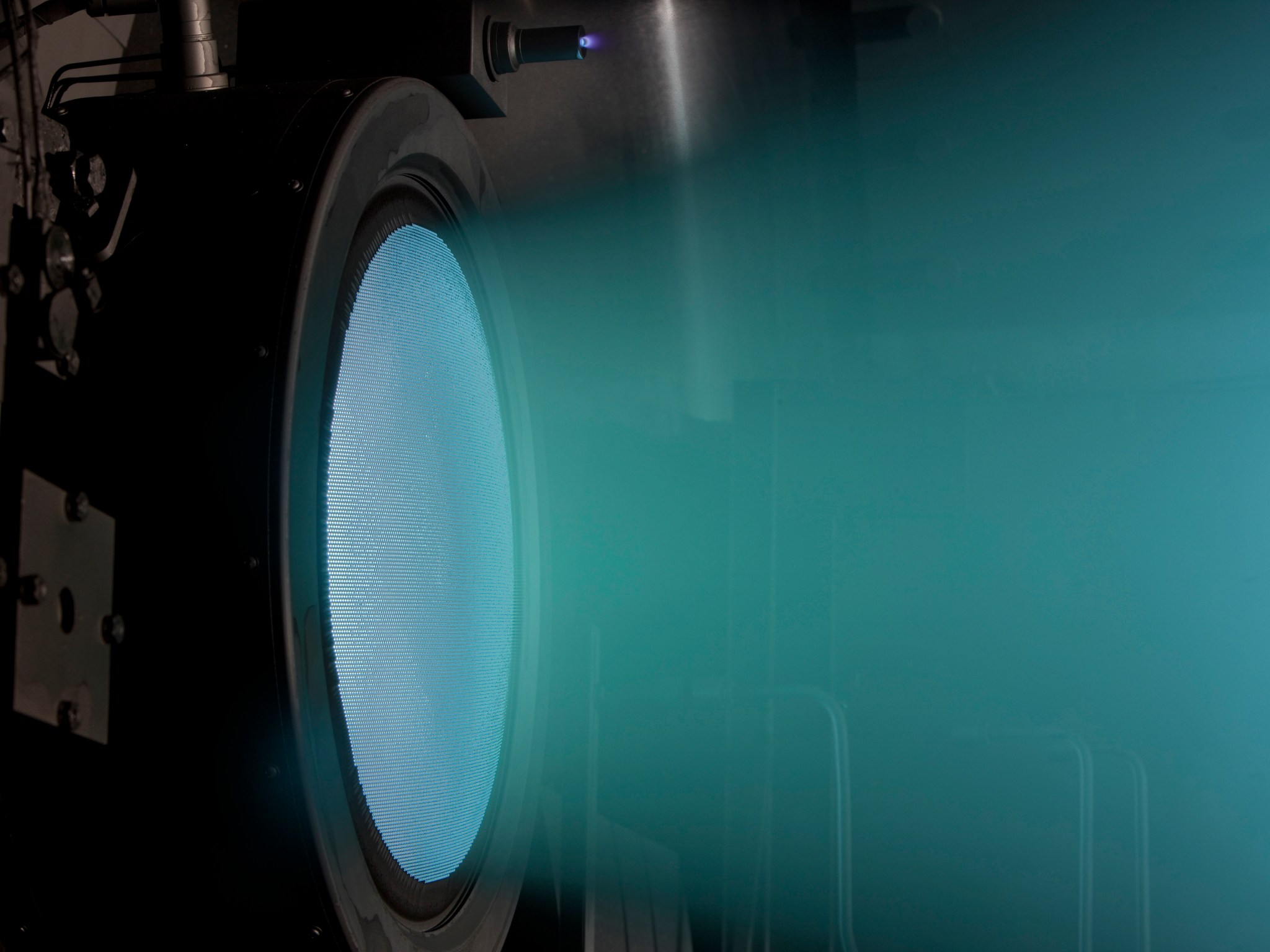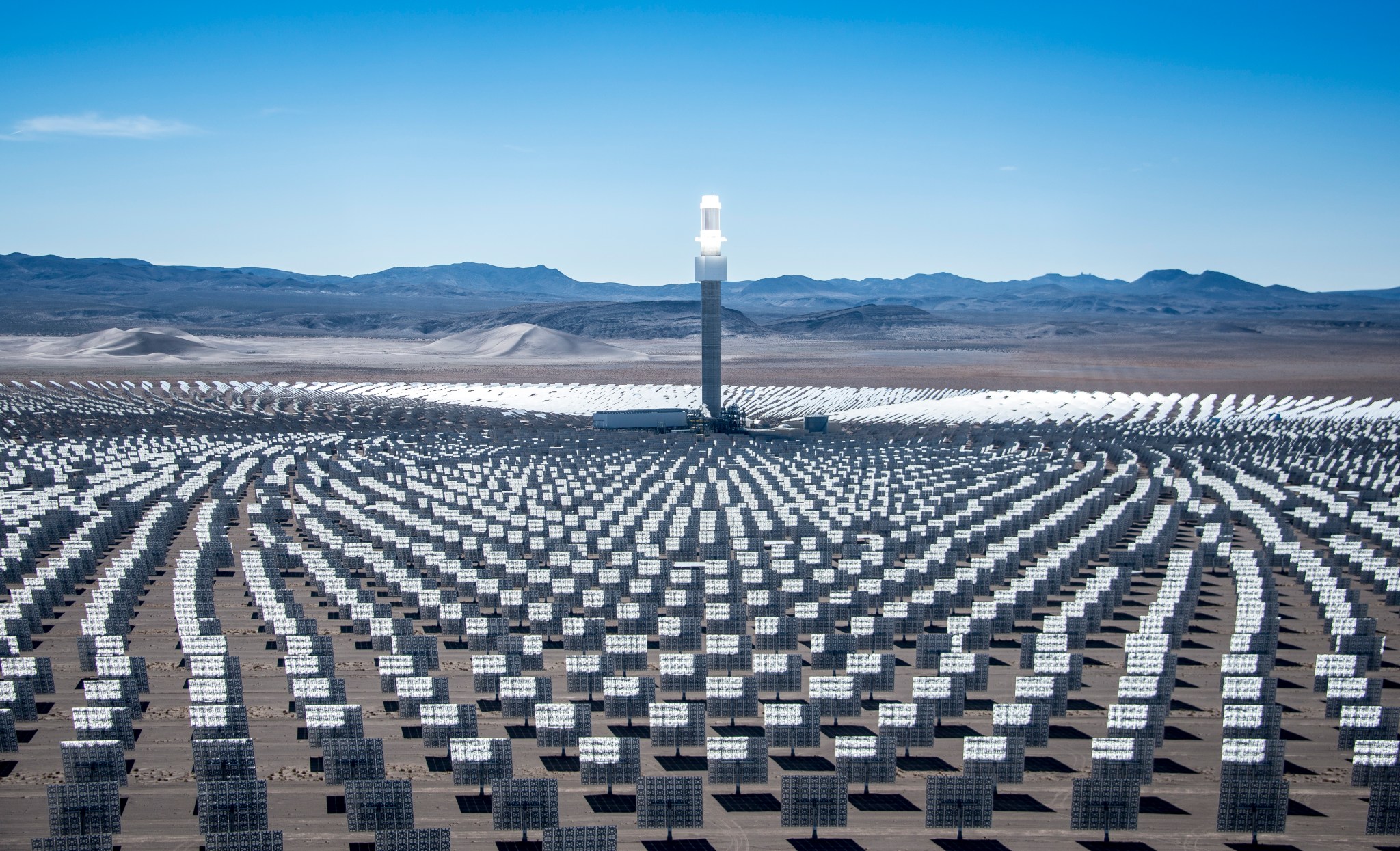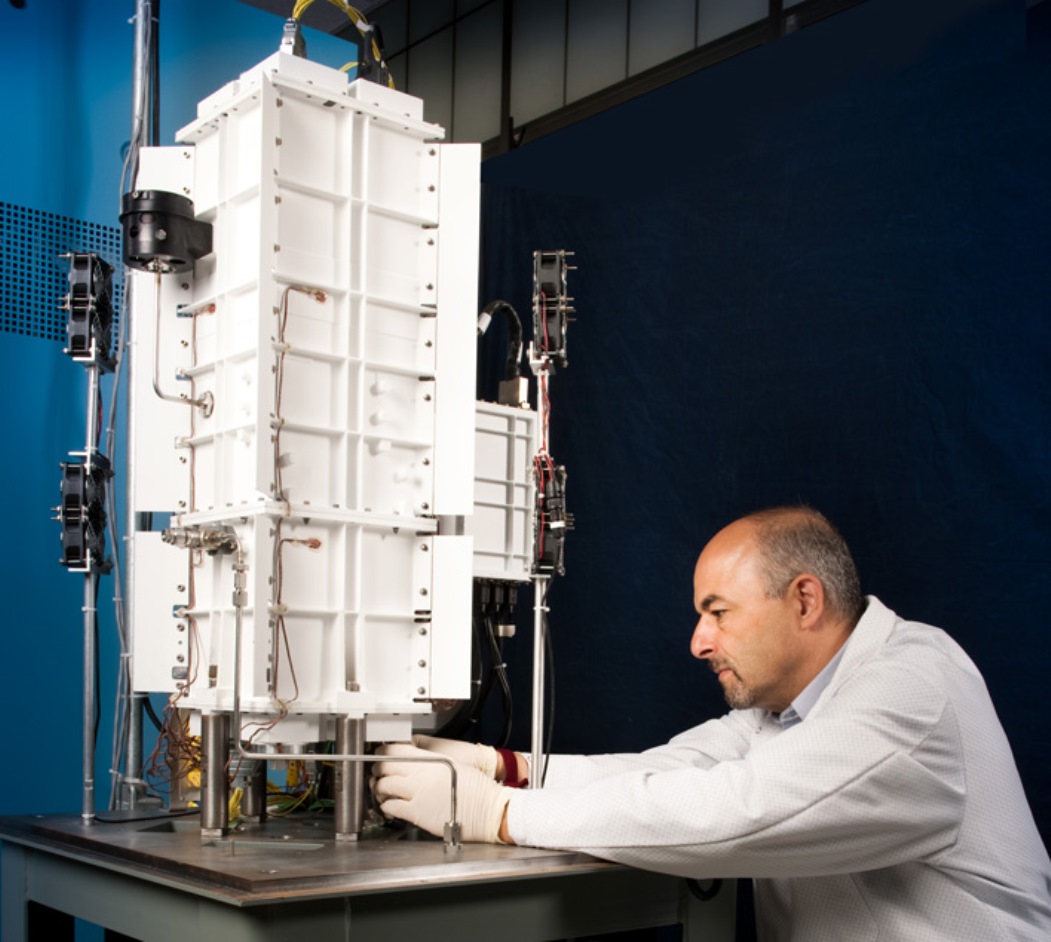It will be the most powerful rocket ever built. More powerful than the mighty Saturn V that took humans to the moon, the Space Launch System (SLS), NASA’s newest rocket currently under development, will have the capability to send astronauts deeper into space than ever before. With SLS and the Orion capsule, humans will no longer have to dream of walking on Mars: They finally will do it.
The NASA architecture for the journey to Mars will use SLS, Orion and a deep space habitat to reach the planet. Doing so will require massive amounts of energy produced by advanced propulsion and power generation systems. In this feature, the final of The Real Martian Spinoffs series, products and technologies related to ion propulsion, solar power and radioisotope thermoelectric generator (RTG) development are cited.

Ion Propulsion
Ion propulsion differs from chemical propulsion. Although chemical propulsion — the type currently used on rockets to escape Earth’s gravity — produces large amounts of thrust for a short period of time, ion propulsion produces a small amount of thrust for long periods of time. The result of a continually burning ion propulsion element, despite its thrust maxing out at a force comparable to a light breeze on Earth, is a spacecraft traveling at significantly higher speeds than is possible with chemical propulsion. In turn, the transit time between Earth and Mars may shrink from the currently standard six to nine months to three to five. The fictional Hermes spacecraft in “The Martian,” for example, uses ion propulsion to traverse the interplanetary distance between Earth and Mars in about four months.
Ion propulsion is not a new idea to NASA. Between 1959 and 1960, Dr. Harold R. Kaufman of NASA’s Glenn Research Center in Cleveland, Ohio, developed and tested the first electron bombardment thruster. The technology can be used for not only primary propulsion but also as secondary propulsion to ensure the spacecraft maintains the proper orientation or attitude.
Around 1970, development of industrial uses for ion beam technology began. Commonweath Scientific Corp. of Alexandria, Virginia, has much of its product line derived from the ion beam technology, which is now used in a variety of applications, including microcircuit etching and deposition of thin films for many products, including optical equipment such as solar cells for power generation.
Solar Power
Current space exploration would not be possible without solar panels. The thin sheets of photovoltaic cells absorb energy from the sun and convert it to electricity. A variety of spacecraft use the technology, from the International Space Station in low-Earth orbit to the Opportunity rover on Mars and the Juno spacecraft currently on its way to Jupiter. In “The Martian,” solar panels are the main source of power both for the habitat’s systems and for charging rover batteries. On Earth, solar power can provide an alternative energy source for homes and businesses alike.
When harnessing the power of the sun, it never hurts to have a few rocket scientists around to help. In the 1970s, Aerojet Rocketdyne of Sacramento, California, began development of the RS-25 engine — the space shuttle main engine, as it is commonly known — under contract to NASA’s Marshall Space Flight Center in Huntsville, Alabama. The engine will also be used on the new Space Launch System. In the 1980s and 1990s, the company used its rocket engine development experiences to help develop solar power tower plant technology. After successful demonstrations of solar power tower plants, Aerojet Rocketdyne licensed its technology to SolarReserve, a Santa Monica, California-based company. In 2013, construction began on the Crescent Dunes Solar Energy Plant near Tonopah, Nevada, that sits on a 1,500 acre field.
The solar power plants work by concentrating sunlight reflected off a mirror array, comprised of over 10,000 heliostats — essentially rotating mirrors — to a concentrator that stands on top of a 550-foot-tall tower. The concentrator heats a molten salt (liquid when above 1,000 degrees F), which then is transferred to a heat exchanger when electricity generation is needed. The heat is given off in the form of steam, which drives a turbine. The now cool salt is recycled through the system to be used again. The clean energy plant generates enough electricity to power 75,000 homes during peak energy times.
RTGs
When New Horizons flew past Pluto in July, it was simply too far away from the sun to use solar power. Instead, the multi-institutional team turned to another tried and trusted power source: radioisotope thermoelectric generators (RTGs). NASA has used RTGs on spacecraft for decades, including on the interstellar Voyager probes and Martian rover, Curiosity. In “The Martian,” the Mars Ascent Vehicle uses an RTG for power generation.
RTGs use the heat from radioactive decay of elements, such as plutonium, to produce electricity. The concept of using heat to produce power is more than a century old; the Stirling engine, for example, which does just that, was first patented in 1816.
In the early 2000s, nearly two centuries after the patent was issued, the Stirling Technology Co. of Kennewick, Washington, partnered with Glenn to help further develop the technology. The RemoteGen line of commercial cycle generators is based off a convertor developed by the partners for use in a deep-space propulsion system. A benefit of the generators harks back to a feature of the original Stirling engine: the ability to use a wide variety of fuels, including biomass. This allows the operator to use whatever fuel is most abundant or easiest for them to obtain. In addition, the generators are capable of operating for years without friction, maintenance or wear.
The engines provide a solution for power generation where extensive power infrastructures do not exist, such as remote areas of Africa. Researchers suggest that one day, the generators might even be used to power appliances, refrigerators for example — keeping the appliances running when a power outage occurs.
NASA is not solely focused on placing a human on Mars or understanding the well-kept secrets of Pluto. The agency, from the very beginning, places a high priority on making technology developed for spaceflight and aeronautics available for commercial and private use. From sensors that help farmers know when to water their plants, to more efficient ways to harness the power of the sun, NASA technology is a part of everyday life. As the country reaches farther out into the solar system, the technology needed to do so will benefit all of humanity.
To read about more Real Martian spinoffs, visit:
https://www.nasa.gov/offices/oct/content/oct-the-real-martians
For more information about spinoff technologies, visit:
For more information about NASA’s Technology Transfer Program, visit:
For more information about new NASA technology development, visit:


























